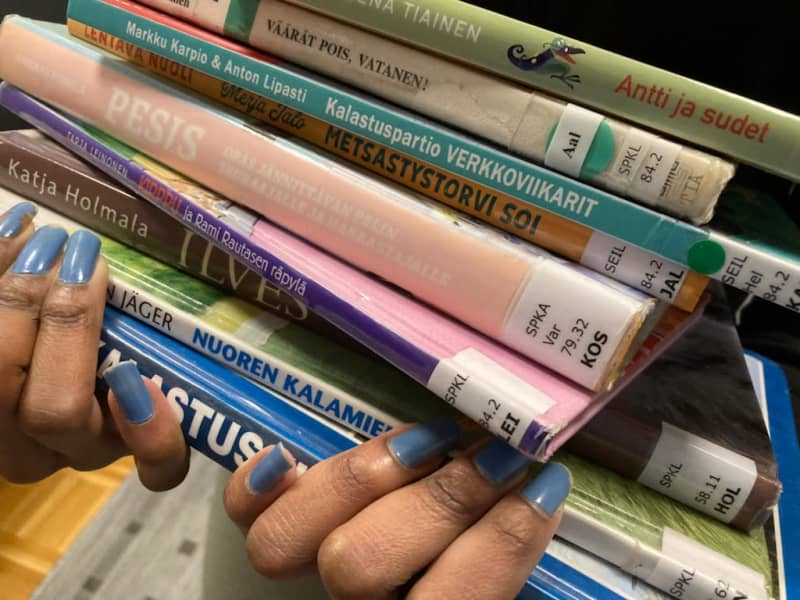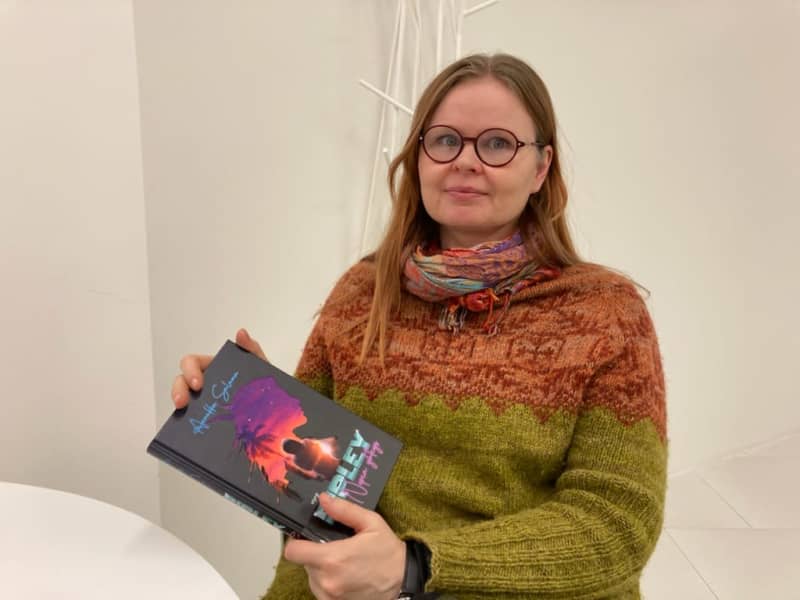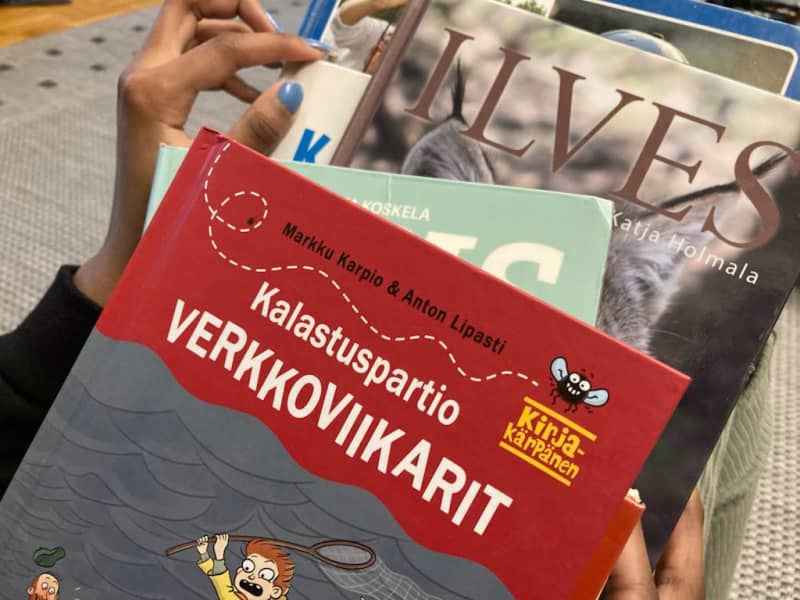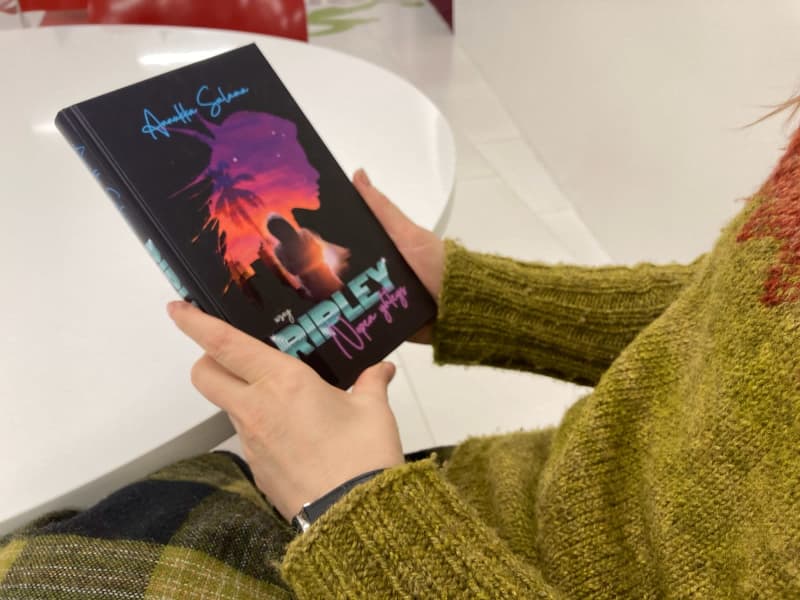
Lottery, baseball and the army are almost completely absent from children’s books, says writer Mervi Heikkilä. The publisher throws the ball to the writers who choose what they write about.
There are blind spots in Finnish children’s and youth literature, i.e. topics for which there are almost no books.
The problem especially concerns young people in rural areas, who cannot find their own circle of life and interests in books.
– We receive quite a lot of children’s and young people’s literature, and it is easy to think that it is diverse and on many subjects. But when we delve deeper, we notice that there are areas of confusion and not all topics can be read, says Heikkilä.

Example:
A class of schoolchildren will come to the library with baseball bats on bicycle racks, because there are many baseball enthusiasts in this group.
When the book adviser asks the class what they would like to read, the schoolchildren hope for nests, fishing, hunting… Their own hobbies, because \”you could maybe read something about them\”.
The problem is that there is not much to read about these topics.
– I have had many discussions about these issues recently with librarians from different parts of the country. Young people living in the country may not necessarily find their own interests in children’s and young people’s literature, says Heikkilä.
\”Familiarity can be a threshold issue\”
In Finland, there is concern about the literacy of children and young people.
Instead of fiction, game instructions, social media and other short light texts are read. Not everyone can cope with more difficult texts.
The major knows that reading skills and reading skills vary within teaching groups. However, most middle schoolers only read when they have to at school.
– Some can be read a short distance when the teacher is next to them. Some stop and say that they have never read a book and will never read it, Majuri says.
It is for these weakest readers that a book about their own interest could be a gateway to reading, Majuri thinks.
– For inexperienced readers, it is important to find something to grasp. If you are not used to reading, familiarity can be a threshold issue, Majuri says.
Majuri agrees with Heikkilä that there are blind spots in the literature.
– I was just looking for youth books related to hunting and there are very few of them, and the ones that are there are from decades ago.
Not with Kive’s head, but according to interest
In Finnish reading promotion work, one of today’s emphases is interest-oriented.
Interest-oriented is knowing and taking into account the target group, and modifying services based on this information.
Libraries apply this, for example, when targeting new users – as well as illiterate and unwilling children and young people.
– You don’t \”hit Kivella on the head anymore\ it’s last winter’s snow, Heikkilä laughs.
According to Heikkilä, children’s and youth literature’s blind spots are, for example, hunting and the army, i.e. topics that are thought to be particularly interesting to boys.
And at the same time, we are especially concerned about illiterate boys.

Mervi Heikkilä reminds that there are hundreds of young people in every age group who think about what it’s like to be in the army. However, there are no recommended books about military service:
Urban-oriented publishers?
Heikkilä and Majuri’s eyes turn in the direction of the publishing houses.
– I know professional authors who have written about fishing, for example, but those books don’t go through the publishing house. Of course, I can’t generalize, says Heikkilä.
– I think that writers would have ideas and the desire to write, but the publisher is the gatekeeper. Publishers are city-oriented, not so much writers, Majuri says.
In the old boys’ books, there were adventures in the woods, making campfires and playing games. Could there be a demand for such even now, Majuri thinks.
– Maybe there won’t be enough sales, or maybe it’s worth trying, Majuri says.
Publishing is a business, but could something be done, even as part of literacy work.
On the other hand, Heikkilä and Majuri wondered if help could be found in small publishing houses, where the number of prints does not have to be so large.
The publishing house strives for versatility
– The range of books for young adults depends on what kind of manuscripts are offered to us. The topics arise from the manuscript supply, the publishing house does not \”make\” them, Toiskallio replies by email.
According to Toiskallio, Otava’s aim is to ensure that the published literature speaks to as many young people as possible, from different points of view and regardless of the level of literacy.
– In my opinion, young people’s literature takes into account the fact that there are as many touching topics as possible in the stories, and an appropriate amount of the story’s own special features. The majority of young people think about the same things universally, although the framework can be very different.
At the same time, he reminds that children and young people often read books aimed at their parents, i.e. for example, young people often choose a book from an adult’s shelf.
– Especially those young people who become interested in literature through their own interests, often read adult books on the subject.

The cost decision is always the sum of many things, says Toiskallio, but a different milieu or subject area is a plus for scripts.
– If we got a script that works at the level of text and story, and the milieu was, for example, the countryside, or the main character’s interest was hunting, we would probably be more interested in it than the average script.
According to Toiskallio, the army would also be interesting as a topic, but:
– Young men and women in the army are 18 years old, and the main characters in children’s literature are basically minors. So a military-themed script would go on the adult side.
\”If I could do a literacy act\”
Literacy is in crisis, says Toiskallio. And the concern is not only about boys, but about the literacy of entire age groups.
According to Toiskallio, literacy work is done all the time in Otava in many ways.
However, the problem is not the available literature, but society’s attitude towards children’s and youth literature. Its appreciation is nowhere to be seen, says Toiskallio.
– There is a lot of talk of concern in the words of the media and decision-makers, but where are the full-blooded reviews of children’s and young people’s books, promotions or introductions in the media or comprehensive portraits of children’s and young people’s authors?
Toiskallio reminds that publishing houses have their own role in literacy work and the promotion of literature, but others are also responsible. Not least adults, by setting an example of reading.
Toiskallio praises the library and teachers for the literacy and literature work they do. However, the media would also need help promoting youth literature.
– If I could do a literacy act in addition to what we do in Otava every working day, I would conjure adults and the media to promote children’s and young people’s literature more, bigger and with more effort, says Toiskallio.

\”Books can be made about people like me\”
On the youth shelf of Seinäjoki library, you can easily find books about digital gaming, horse riding and cheerleading. You can even find new things to read about football this year.
– There are so many topics; about the game world, reflection on identity, environmental issues and traditional growth stories. Many kinds of things preoccupy the main characters of the books, says Mervi Heikkilä.
Marja Majuri was involved in choosing this year’s Topelius and Arvid Lydecken literature award candidates. So he has read almost all children’s and youth literature published this year.
Majuri knows that novelty books for young people have a lot of mystery literature and excitement.
– However, perhaps the toughest subjects are in longer and thicker books, which the unaccustomed reader will not grasp, because the book is neither thin nor easy.
Mervi Heikkilä reminds that reading has other meanings in addition to developing reading skills. For example, it would be important to find oneself and one’s circle of life in books, i.e. young protagonists and objects of identification.
– That way you get experiences of dignity; I am also important and books can be made about people like me, says Heikkilä.
*The subject can be discussed until Tuesday, December 27 at 11 p.m.*
